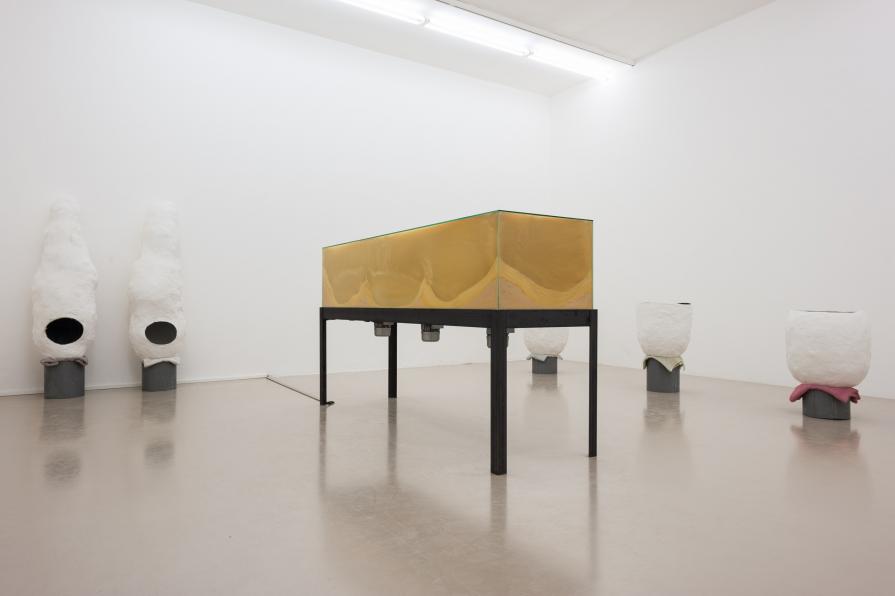
Haboob
A good example of this is "cérémiques en sac à dos", were the artist produce a series of portable ceramic sculptures in the form of common rugsacks that he later used to climb the mountain of Annapurnas in Nepal. The bags are then presented as the product of a sculptural process that began with an ordinary object but is now infused with the experience of an adventure-performance held in the realm of the ‘outside’ world.
It is also in this context that we can inscribe "Haboob" (2013-2016) or sandstorm in arabic. The sculpture consist of a long vitrine filled with sand. Inside the vitrine there are three helices that are activated randomly, creating an unexpected whirlwind of sand moving in all directions inside a contained space. Hypnotic and frenetic in equal measure, Haboob is an artificial natural disorder meant to represent an instant of ‘out-doors’ chaos or flux inside a vitrine, which is a museographical dispositive commonly use to display objects associated with the world of humanities (ethnography, art, archaeology, etc).
















Comments 0
Say something